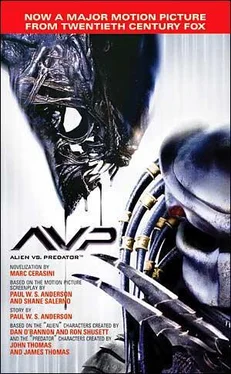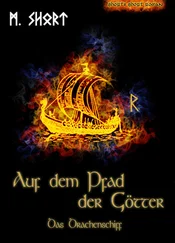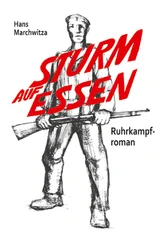“How bad?”
“We lost half the crew,” Thomas said, frowning.
“Bobby leave?”
“Yeah. And Joe. And Caroline. Nick. Jerry and all of Jerry’s crew.”
Sebastian took the news hard. He slumped down on his cot, his shoulders sagging. “Thomas, the burial chamber is here. I know it.” His fingers made a fist. “We’re going to find it—and a link to the Egyptian culture.”
“I know it, too,” the younger man replied, pushing the blond hair from his face. “But without a crew and a new permit to dig, we’re out of business.”
Sebastian stared at Thomas a moment, then got back on his feet. With renewed determination, he threw more things into his pack.
“Hold the rest of the team together for two days. I’ll go to Mexico City… talk to the suits. I’ll get our dig back.”
“I might be able to help you accomplish that, Professor.”
The voice was a stranger’s, deep and with a precise British accent. Sebastian and Thomas turned to find a tall black man standing at the door to the tent. De Rosa estimated the man to be well over six and a half feet tall, and the perfectly tailored London business suit did little to hide his broad chest and thick-muscled arms. Despite his size the man moved with polished grace.
“Do I know you?” Sebastian asked.
“My name is Maxwell Stafford,” the man replied. Then he stepped forward and handed Sebastian a bone-white stationery envelope that bore the embossed monogram of Weyland Industries.
Sebastian tore it open and stared at the piece of paper inside—a personal check from Charles Weyland made out to Dr. Sebastian De Rosa. The number on that check was followed by more zeroes than a carbon-dating estimate. Sebastian looked up at the stranger.
“In exchange for a little of your time,” Maxwell Stafford explained.
Near the Antarctic Circle,
325 Miles Off the Cape of Good Hope
The massive, British-built Westland Sea King helicopter designated Weyland 14 flew through a brewing storm. Outside, leaden clouds roiled and wind gusts intensified, making for a bumpy ride, but the Sea King’s shudders and sudden dips went unnoticed by one passenger.
Alexa Woods slept soundly, sprawled inside the chopper’s main cabin. She was still clad in the cold-weather gear she’d been wearing when she’d been plucked from the Himalayas. A copy of Scientific American lay open across her chest. On the cover there was a recent photograph of the founder and CEO of Weyland Industries, and the headline read “Charles Bishop Weyland, Pioneer of Modern Robotics.”
Standing at the window near Lex was a tall, skinny man with gangly limbs and a prominent Adam’s apple. On his nose was perched a pair of bottle-thick glasses; he gripped a digital camera in his hand. He placed the camera on a seat in an attempt to take his own photograph. On his first try, all he succeeded in doing was blinding himself. On his second, the chopper lurched and he bumped into Lex.
“Sorry,” the man said when Lex woke. She nodded and was about to close her eyes again when he said, “But since you’re awake, would you mind?”
He held up the camera and tried to flash Lex a seductive smile. It only made him look geeky.
Lex took the camera and snapped the photo.
“I’m documenting the trip for my boys so they know that their father wasn’t always boring,” the man explained. He reached into his parka and pulled out a thick wallet of photographs. He presented a picture to Lex.
“That’s Jacob, and that’s Scotty,” the man said proudly.
“They’re cute,” Lex said out of politeness. “Is this your wife?”
“Ex-wife,” he replied. Then the man thrust out his hand. “Graham Miller, chemical engineering.”
They shook.
“Alexa Woods, environmental technician and guide.”
“Do you work for Weyland?”
Lex shook her head.
“I split my time between working for a small environmental foundation and taking scientists on expeditions on the ice. One pays for the other and neither pays very well.”
“The ice?”
“Arctic and subarctic environments, the Himalayas, Antarctica—”
Just then the copilot stuck his head into the cabin. “Lex, you and your friend buckle up. We’re close to the ship now, but we’re going to hit some major turbulence.”
Lex buckled her seat belt. Miller sat down across from her and did the same.
“Friend of yours?” he asked.
“Of my dad’s. He trained most of the pilots down here. During the summer my sister and I tagged along.”
“Does your sister work with you?”
Lex nearly laughed at the notion. “No way. She hates the cold, moved to Florida. If you see her skiing, she’s being pulled by a boat.”
The copilot, back in his seat, turned and yelled from the cockpit.
“Just passed the PSR!”
“Damn,” said Miller, clutching his camera. “I wanted a picture.”
“Of what?”
“The PSR. They should really call it out before they pass it.”
Lex shook her head. Where’d this guy come from? “The PSR is the point of safe return,” she gently explained to him. “It means we’ve used more than half our fuel so we can’t turn back.”
Miller visibly paled.
“We could ditch,” Lex added to the engineer’s relief, "… but the temperature of the water would kill us in three minutes.”
Miller grew a bit paler as the helicopter continued to shake and rattle.
“Antarctica,” Miller said softly as he gazed out of the window.
The 278,000-ton Icebreaker Piper Maru,
270 Miles Off the Cape of Good Hope
Captain Leighton stood, legs braced, on the ship’s heaving bridge and squinted through rain-soaked windows. Gray, foam-flecked waves crashed over the bow of the pitching vessel while stinging wind lashed the superstructure. At this time of year, there were long nights and short days this close to Antarctica, with a continuously twilight sky that seemed forever dominated by roiling purple clouds. The storm that battered the ship showed no sign of abating, and powerful gusts sent salt washes across the deck.
Leighton, who’d spent close to forty years at sea, had navigated the Cape of Good Hope many times before, and he didn’t need to check the barometer to know that weather conditions were only going to get worse. The first European to circumnavigate this region in 1488, Bartholomeu Dias had christened these waters Cabo Tormentoso —“The Cape of Storms” in Portuguese. On days like this, Leighton wondered why the cape’s original name hadn’t stuck.
“Weyland 14 to Piper Maru. We are on approach,” announced a voice through the crackling of the ship’s radio.
Captain Leighton slipped on a hands-free communicator and spoke into the microphone. “This is Piper Maru. You’re cleared for landing, but watch yourself, Weyland 14. We have severe wind shear. It’s going to be rough.”
He broke communications with the aircraft and faced his executive officer. “Gordon, I want you to send out a crash team, just in case. Put them on deck, but out of sight. We don’t want to spook the fly boys.”
The bridge crew chuckled.
A few moments later, they watched from the relative comfort of the command deck as the huge helicopter touched down on the storm-tossed icebreaker. Sailors hurried into the rain to lash down the aircraft with hooks and cables.
After the engines powered down, the side hatch slid open, and the passengers disembarked, crossing the steel deck in the pelting rain.
From his command position, Captain Leighton counted the bodies through water-streaked windows. “Two new arrivals. I hope we have enough room.”
Читать дальше












